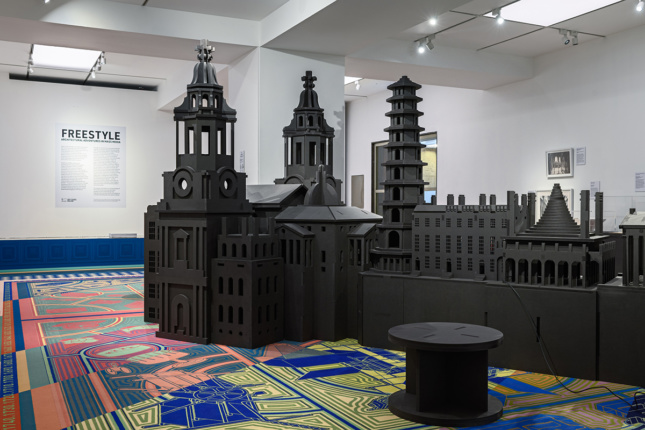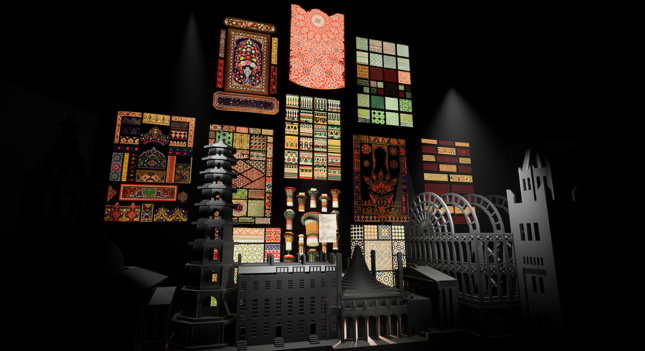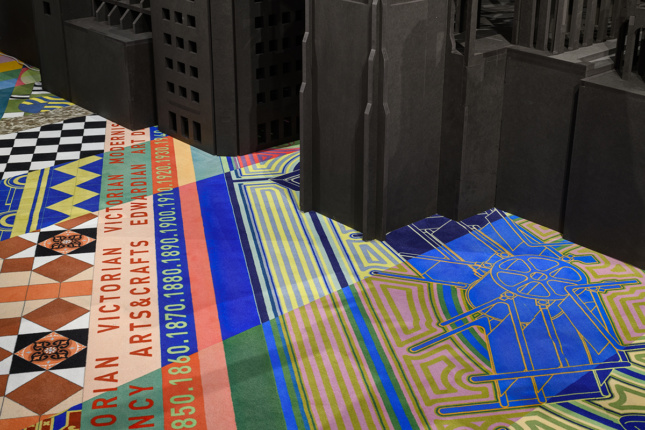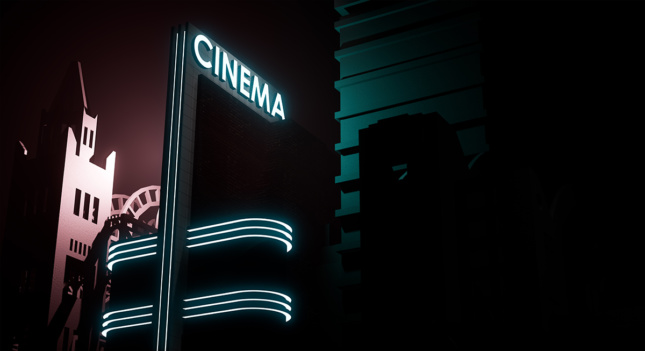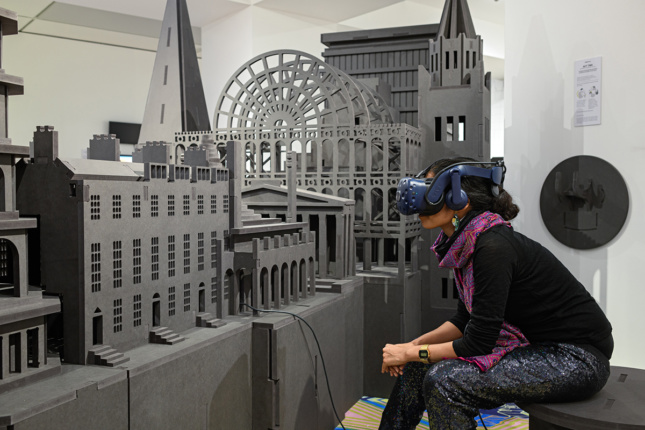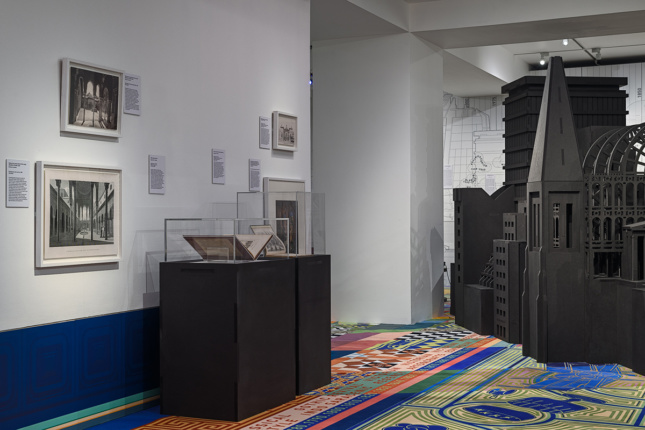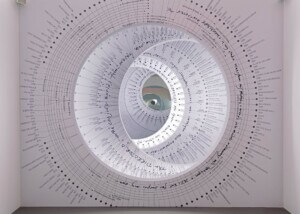The Royal Institute of British Architects (RIBA) is staging its first virtual reality exhibition, Freestyle: Architectural Adventures in Mass Media, created by Space Popular and curated by Shumi Bose.
How architectural styles change and combine, and are propelled by media—etchings, magazines, Pinterest—is at the center of Space Popular‘s dizzying installation, and the changes in the technologies of architectural publicization will also be the subject of an upcoming lecture by the studio. Rather than taking the taxonomical approach of traditional historians, Space Popular opted to investigate the history of style itself by showcasing the messy experience of viewing built aesthetics whether on the page, the street, or the screen. As Space Popular cofounder Lara Lesmes said in a release, “Styles are most easily recognized as patterns, which can translate across mediums, from cutlery to textiles, furniture to buildings. This show explores how style relates to popular culture and technological changes.”
Space Popular’s un-history takes place both on headsets and in physical space. A colorful carpet acts as a large-scale timeline of 500 years of architectural history, while a sizable model in the center of the room combines oblique and direct references to notable London structures—including St. Paul’s Cathedral and the Crystal Palace—into one atemporal amalgam.
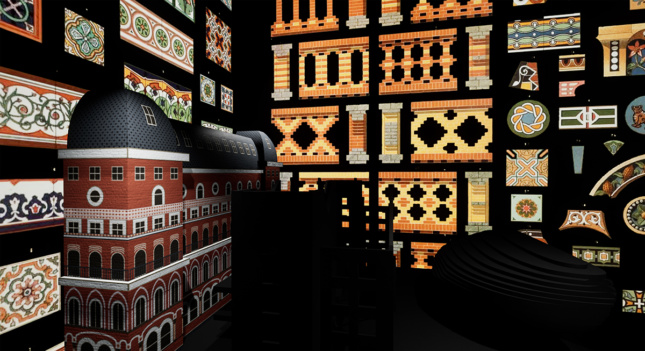
Through headsets, avatars transport visitors through VR spaces that explore the history and present of style in the built environment and which are occupied by many patterns of stained glass, noir-ish outlines of art deco buildings, Googie decorations, and more. The virtual spaces themselves use various representational styles: some parts look hyper-realistic, others like 8-bit video games.
And, perhaps, VR may be a new way we experience style together in the future. “Architectural style has throughout all of human history been the most class dividing art,” wrote Space Popular co-founder Fredrik Hellberg of Freestyle in a RIBA announcement. “As spatial media makes its entry through virtual reality, this may finally change.”
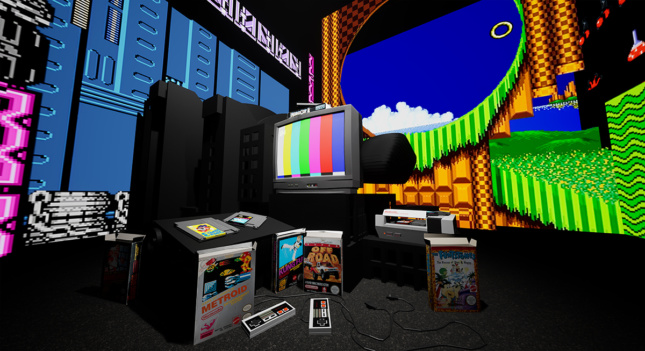
In addition to Space Popular’s virtual and material creations, there are objects from the RIBA collection, including books, drawings, photographic and stereoscopic prints and other materials, with original works by Owen Jones, Augustus Pugin, and John Nash among them. There are also “alternative” VR spaces created by 15 students from the London Design and Engineering University Technical College on display.
This is the second in a series of exhibitions at RIBA that respond to the work of 15th–16th-century architect Sebastiano Serlio, whose visual-heavy publications, written in vernacular language, are part of an under-recognized legacy of architectural communication and education.
Freestyle: Architectural Adventures in Mass Media at the Royal Institute of British Architects, London, will run through May 16, 2020






